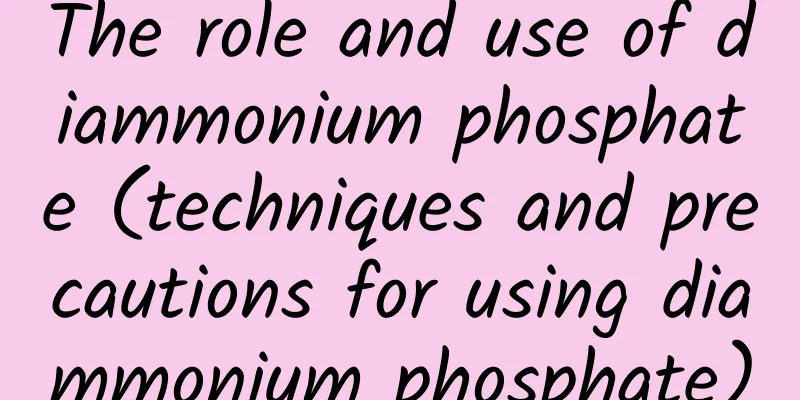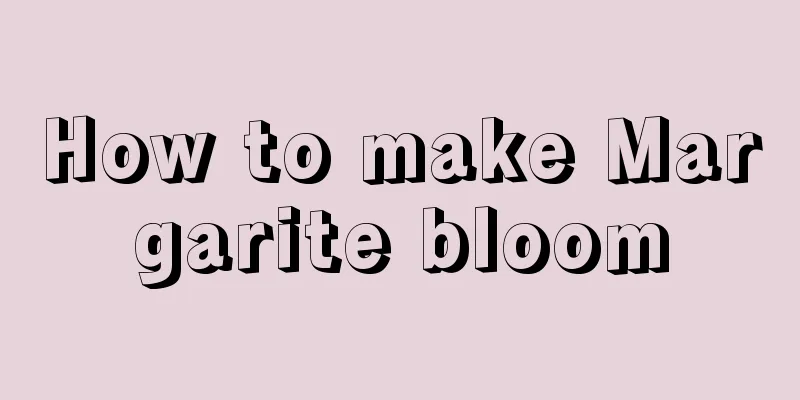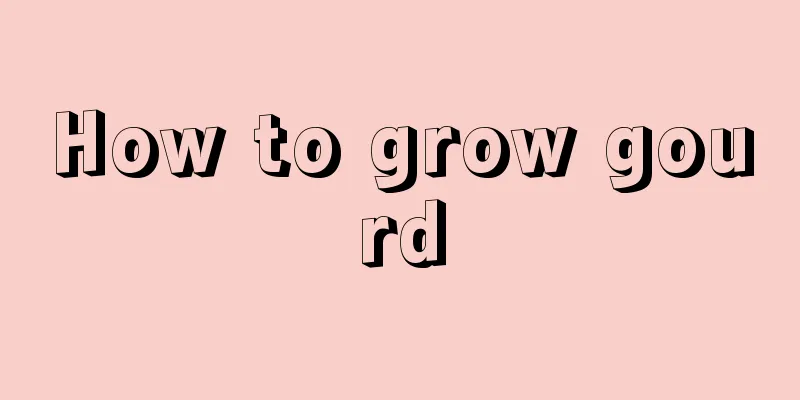The role and use of diammonium phosphate (techniques and precautions for using diammonium phosphate)

|
Diammonium phosphate is called "king fertilizer" by farmers because it contains not only 18 nitrogen but also 46 phosphorus, which can increase nitrogen and phosphorus elements in crops at the same time. Especially in the Northeast, when planting corn and soybeans, people prefer to mix diammonium phosphate with urea and potash fertilizer, and the effect is still good. However, mixed fertilizers have a disadvantage, which is that the seedlings emerge unevenly. We can see that some seedlings in the field are tall and some are short. This is mainly because urea, diammonium phosphate and potassium fertilizer in the mixed fertilizer are all separate grains. Whichever one sinks more during sowing will be planted faster, so some seedlings will be tall and some short. Moreover, another disadvantage of mixed fertilizers is that they are prone to fertilizer deficiency in the later stages, and nitrogen and potassium topdressing needs to be applied during the growing period. The monoammonium phosphate we currently use has two types of nitrogen, phosphorus and potassium content of 11-44-0 or 10-50-0. Of course, we will also make appropriate adjustments based on customer needs. What should we pay attention to when using monoammonium phosphate and diammonium phosphateDiammonium phosphate is alkaline. When applied to alkaline soil, it reacts with water to increase the alkalinity. In addition, if the calcium and magnesium content is relatively high, they will react with phosphate and be fixed by calcium ions in the soil. Another reason is that we usually use groundwater for irrigation. The water is relatively "hard" and has a high calcium ion content, which leads to a very low actual utilization efficiency of diammonium phosphate, generally at 10-25%. Therefore, it is recommended to use some compound fertilizers or monoammonium phosphate for more alkaline plots. Diammonium phosphate usage in crops, for reference only1. WheatWe now mostly use compound fertilizers when sowing wheat, or use special fertilizers for wheat. If we use diammonium phosphate as base fertilizer, it is recommended to use 40-50 catties of diammonium phosphate + 20-25 catties of potassium fertilizer per mu. During the seedling and tillering stages, it is recommended to apply 15-20 catties + 10-15 catties urea + 20 catties potassium fertilizer per mu. This can make the wheat seedlings strong, drought-resistant, lodging-resistant, increase the number of ears, and make the grains full. 2. RiceWhen we grow rice, if we use diammonium phosphate as base fertilizer, farmers are advised to use 40-50 kilograms + 20-25 kilograms of potassium fertilizer per mu. When it comes to the tillering stage, apply 10-15 catties + 10-15 catties urea + 20 catties potassium fertilizer per mu. It can effectively promote rice tillering, prevent root rot, increase the number of ears, the number of grains per ear, and the fullness of the grains. 3. CornWhen planting corn, when using diammonium phosphate as base fertilizer, it is recommended to use 35-45 catties + 20-25 catties of potassium fertilizer per mu. When it comes to the seedling stage and jointing stage, you can apply 20-25 catties + 15-20 catties of urea + 15-20 catties of potassium fertilizer. It can make corn seedlings strong, drought-resistant, lodging-resistant, increase the number of corn cobs, and make the grains full. 4. CottonWhen planting cotton, if diammonium phosphate is used as the base fertilizer, it is recommended to use 40-50 catties + 20-25 catties of potassium fertilizer per mu. At the seedling stage and bud and boll stage, 10-15 catties + 20 catties of urea + 20 catties of potassium fertilizer per mu can be applied to increase the number of bolls per cotton plant, reduce bud and boll shedding, and improve the quality of cotton fiber. 5. PeanutsWhen we plant peanuts, we recommend using 20-30 catties of diammonium phosphate + 20-25 catties of potassium fertilizer per mu. During the flowering and needle stages, apply 10-15 catties + 15-20 catties of potassium fertilizer. This can increase the number of peanut fruits per plant, strengthen the seeds, and improve the quality. 6. SoybeanWhen sowing soybeans, if you choose diammonium phosphate as the base fertilizer, it is recommended to use 30-35 catties + 20-25 catties of potassium fertilizer per mu. When it comes to the flowering and fruiting stages, you can apply 10-20 catties + 10-15 catties of potassium fertilizer, which can effectively increase the number of fruits per plant and strengthen the seeds. 7. SorghumWhen diammonium phosphate is used as base fertilizer, the recommended dosage per mu is 40-60 jin + 20-25 jin of potassium fertilizer. At the seedling stage, 20 jin of urea can be applied to strengthen sorghum seeds and increase the number of grains per ear. 8. PotatoesWhen planting potatoes, if diammonium phosphate is used as the base fertilizer, it is recommended to use 40-50 catties + appropriate amount of potassium fertilizer per mu. At the bud stage, 25 catties + appropriate amount of potassium fertilizer can be applied to make the potatoes larger and higher in starch content. 9. Melon, Fruit and VegetablesIf we use diammonium phosphate as base fertilizer when planting melons and fruits, it is recommended to use 50-60 catties + appropriate amount of potassium fertilizer per mu, and apply 20-30 catties of urea per mu in two times. It can reduce pests and diseases and increase yields. 10. Leafy vegetablesWhen we grow leafy vegetables, if we use diammonium phosphate as base fertilizer, we can use 50-60 catties + appropriate amount of potassium fertilizer, and when applying topdressing, we can apply 20-30 catties of urea + appropriate amount of potassium fertilizer twice. It can make the leaves green, the plants big and the yield high. The above content is only for reference, and the specific dosage should be combined with your own situation. Since diammonium phosphate does not contain potassium, adding potassium fertilizer in moderation will achieve better results. In addition, if you want a better taste, you can use it with farmyard manure or commercial organic fertilizer. Finally, we must separate the seeds and fertilizers when using them, and apply them deeply and partially to avoid burning buds and seedlings. |
>>: When is the best time to plant spring corn?
Recommend
Common pests of monkey orchid and their control methods
Common pests of monkey orchid: aphids Symptoms of...
Reproduction of Rhododendron gaoyueensis
Cutting propagation This method of propagation is...
There is no light at home, but you can still make these 6 plants bloom
1. White Anthurium Shade tolerance index: ★★★★★ D...
How to grow Hosta at home
The substrate for Hosta flowers The so-called gro...
The difference between iris and iris
1. Different plant types The iris is also called ...
Apple leaf cultivation methods and precautions
1. Matrix selection Apple leaves grow well in san...
Is it better to grow garlic in water or soil?
Is it better to grow garlic in water or soil? Whe...
How often should I water the fortune tree?
How often should I water my fortune tree? General...
What kind of flowers does the edible lily bloom?
1. What does an edible lily look like? The edible...
Grapefruit seed germination conditions and planting requirements
1. Seed germination conditions If you want the gr...
How to propagate Jade Plants by cuttings
When propagating the Jade Plant by cuttings, be s...
The difference between Platanus ovata, Platanus rubra and Platanus variegata
The difference between sycamore and red hibiscus ...
The difference between rubber tree and rubber tree
1. Leaf Difference The rubber tree has finger-lik...
When is the right time to sow beans?
Pinto bean planting time Flower beans, also known...
What is the best fertilizer for carnations?
Carnation fertilization time Carnations generally...









